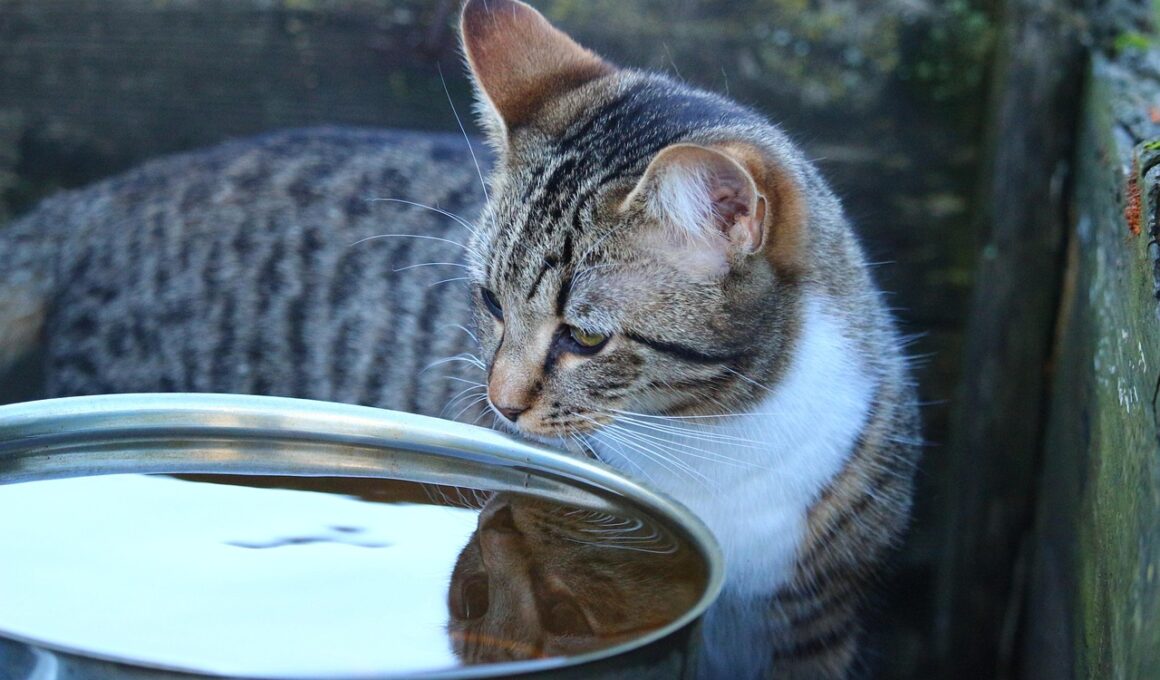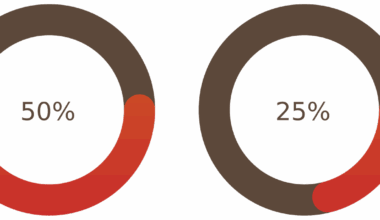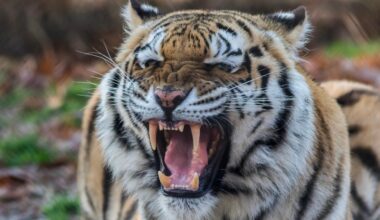The Effects of Water Deficiency on Cat Mood and Behavior
Proper hydration is crucial for maintaining a healthy lifestyle, especially for our feline companions. Cats are known for being notoriously selective about their water intake, which can lead to unintentional dehydration. Just like humans, cats experience various changes in mood and behavior when they do not consume enough water. Dehydration can result in lethargy, irritability, and even aggression. Moreover, it can also lead to health issues that could intensify undesirable behaviors. Understanding the pressures that hydration affects can make a significant difference to a cat’s well-being. Water plays a pivotal role not just in bodily functions but also impacts emotional states. A well-hydrated cat tends to be more interactive and playful, whereas a dehydrated cat may isolate itself, expressing distress through various behaviors. Owners should regularly monitor their cat’s water intake and encourage them to drink more. This can involve providing fresh water multiple times a day or using water bowls or fountains that entice them to hydrate. Keeping an eye on your cat’s drinking habits is essential for ensuring they maintain a mood that reflects happiness and health.
Signs of Dehydration in Cats
Identifying dehydration in cats can be challenging because they often hide their discomfort instinctively. However, there are several signs that can indicate your cat is not drinking enough water. One of the most common symptoms is a decrease in urination. If you notice that the litter box isn’t being used as often, this could be a warning sign. Additionally, you may observe your cat’s gums becoming dry or sticky, a direct sign that they are not well-hydrated. Another indication is skin elasticity. To check this, gently pinch the skin on the back of your cat’s neck and release. If it doesn’t snap back quickly, it suggests dehydration. Increased thirst, however, may also indicate dehydration, so ensure the water bowl is filled. Observe any signs of lethargy or agitation, as these are manifestations of discomfort linked to dehydration. Prolonged lack of hydration can lead to more serious health conditions such as kidney issues or urinary tract problems. Being proactive in monitoring hydration can vastly improve a cat’s overall mood and energy levels, creating a positive environment for both owners and pets.
Maintaining hydration is integral not only to physical health but also contributes to mental well-being. Cats may feel overwhelmed and stressed in situations where they can’t access water. Cats’ behavioral issues, like aggression or withdrawal, could stem from a lack of hydration. Proper hydration levels work to keep their mental faculties sharp and responsive. This is particularly essential as dehydration can exacerbate stress responses, particularly in multi-pet households, where they feel competition for resources. Creating a comfortable environment encourages better water intake. For instance, consider using multiple water bowls placed in different locations around your home. Different sizes and styles of bowls might appeal to your cat’s unique preferences, therefore increasing the likelihood of hydration. Remember, just as we enjoy clean, fresh water, so do our pets! Having access to clean water is vital. Additionally, wet food options can both provide hydration and encourage your cat’s natural instinct to seek food containing water. This not only keeps them hydrated but also keeps their diet balanced, ultimately elevating their mood and overall behavior.
Impact of Diet on Hydration
The type of food you offer plays a pivotal role in your cat’s hydration levels. Dry kibble contains minimal moisture, while wet food is packed with water content, significantly aiding in hydration. The nutritional balance found in wet food assists in maintaining an optimal fluid level within a cat’s system. As such, incorporating wet food into your cat’s diet can lead to improved hydration. Some pet owners may find that their cats prefer dry food, leading to limited water intake. However, you can gradually mix in wet food to encourage a more balanced diet. Providing a blend might cater to both their dietary preferences and hydration needs. Additionally, you can monitor how much they consume of each type to ensure healthier hydration levels. Moreover, cat owners should leverage feeding times to encourage drinking. For example, adding water or low-sodium broth to dry food can make it more palatable, thus increasing liquid intake. It’s important to remember that hydration should be part of a holistic approach to pet care. Ensuring our feline friends receive sufficient hydration can positively impact their mood and behavior.
As the seasons change, so too should our approach to ensuring hydration for our cats. During warmer months, cats may dehydrate more quickly due to higher temperatures. Increased outdoor activity can also lead to higher water loss. It is essential during this time to adjust their hydration sources. Offering cool water bowls and continuously replenishing them can provide an extra incentive for cats to drink. Some owners find that adding ice cubes can make water more enticing and refreshing for their pets. Also, be mindful of how much outdoor access your cat has; during particularly hot days, encouraging indoor playtime can help reduce the chances of dehydration. Moreover, during colder months, indoor heating can lead to drier air, causing a similar risk for dehydration as in hot seasons. You might consider using humidifiers to maintain moisture in the air, making water consumption easier for your kitty. A consistent approach will ensure your furry friend remains hydrated and absolutely happy, cultivating a blissful atmosphere within your home. Therefore, keeping the feline’s environment comfortable, enjoyable, and moist plays a critical role in their well-being.
Best Practices for Encouraging Hydration
Fostering healthy hydration habits in your feline companion should be a primary goal. One effective method to promote greater water consumption is the use of water fountains. Cats are naturally attracted to flowing water, which offers a fresher taste compared to stagnant water in a bowl. Investing in a quality pet water fountain may yield tremendous benefits to both hydration and mood improvement. Rotating the types of water bowls you use can also provide something new for your cat, keeping their interest piqued. Additionally, place the water in a calming and quiet area, where your cat feels safe to hydrate without interruptions. Another option is offering ice cubes, especially during hot days, which can entice them to lick and drink more. Experimenting with different styles and presentations of water can lead to improved intake overall. It’s advisable to change the water daily to ensure freshness and to monitor their intake. Keep in mind that all these little adjustments not only influence hydration but also aid in regulating a positive emotional response from your cat.
In conclusion, hydration directly correlates with a cat’s behavior and overall health. Cats demonstrate a range of behaviors tied to their hydration levels, ranging from lethargy to aggression when they experience deficiencies. It is crucial for cat owners to become educated about the signs of dehydration and implement appropriate strategies to counteract these risks. From evaluating their diet to ensuring they have a plethora of water sources, responsible pet ownership entails being vigilant about hydration. Pay attention to seasonal adjustments and provide an environment conducive for drinking. By doing so, it’s simple to improve not only hydration but also to support better behavior and moods in cats. The happier and healthier your pet feels, the more they will engage with you, creating a greater bond. Cats thrive on stability and care, which can be enhanced through proper hydration. Regular vet check-ups will also assist in monitoring their health. Enhancing hydration practices in homes with cats effectively promotes a happier lifestyle for both owner and pet. Thus, implementing these practices will yield a more enjoyable living experience with your furry companions.
Conclusion
Hydration is a fundamental need for cats, impacting their mood and behavior significantly. Cats exhibit clear signs that they require adequate hydration, just like the rest of us. Observing these signs can help pet owners take necessary measures to ensure their furry friends remain healthy, happy, and stress-free. Combining an understanding of their hydration needs with other aspects of cat care results in a holistic approach to pet ownership. Paying attention to their diet, behavior patterns, and adjusting hydration practices leads to profound effects on their lives. Cats thrive in environments where they feel secure and valued. The better hydrated they are, the more energy they will have for play and interaction. This creates a better relationship between owners and pets. It’s crucial to remember that hydration is more than just giving them water. Providing a mix of wet and dry foods, along with various hydration methods, ensures a comprehensive approach to well-being. Ultimately, when hydration habits are implemented positively, the bond between cat and owner will flourish, leading to a happier home for everyone. Each proactive step taken in encouraging hydration will benefit their emotional and physical health.


